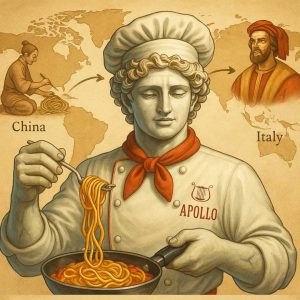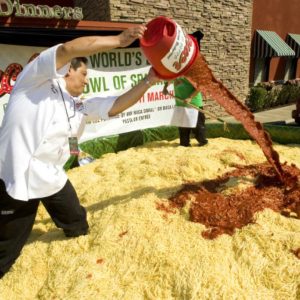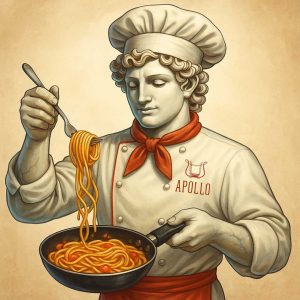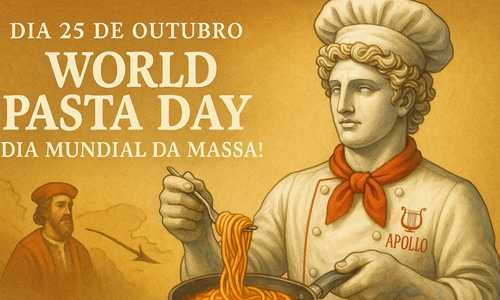Introdução
Dia 25 de outubro é o World Pasta Day, ou Dia Mundial da Massa!
Essa data celebra um dos alimentos mais amados do planeta — presente em mesas, culturas e até idiomas diferentes. Mas a história da pasta vai muito além de um simples prato delicioso. Ela envolve trocas culturais, tradição e até inovação. E, claro, dá pra aprender muito inglês com isso!
📖 Aqui você encontra…
Nível: B1–B2 (Intermediário / Intermediário-Avançado)
Objetivo: Conectar cultura, história e linguagem por meio da culinária, explorando vocabulário, expressões idiomáticas e curiosidades sobre o World Pasta Day.
Tópicos gramaticais abordados nesse texto:
-
Present Simple & Past Simple: Para apresentar fatos e história, como “Pasta is simple” e “It traveled through trade routes.”
-
Comparatives & Metaphors: Para mostrar conexões entre comida e linguagem, como “Food connects people the same way language does.”
-
Food Vocabulary & Idioms: Expressões relacionadas à comida, como “spill the beans” e “a piece of cake.”
-
Cultural Vocabulary: Palavras de origem italiana e seu impacto no inglês (e.g., spaghetti, ravioli, lasagna).
-
Intercultural Learning: Como o contato entre culturas transforma tanto a culinária quanto os idiomas.
The World Pasta Day: A Taste of Culture, History, and Language
 A Dish That Traveled the World
A Dish That Traveled the World
Pasta might be Italian at heart, but its story began long before Italy became famous for it. Some historians say that pasta originated in ancient China, where noodles were made from millet over 4,000 years ago. Later, it traveled through trade routes — possibly thanks to Marco Polo — until it became a symbol of Italian cuisine.
From spaghetti to penne, lasagna to ravioli, pasta evolved in every corner of the world. Each culture added its own flavor, just like how languages evolve through contact and exchange.
Why Pasta Is More Than Just Food
Pasta is simple: flour, water, and sometimes eggs, but it represents creativity and diversity. There are more than 350 different types of pasta, each with a unique name, shape, and story. Linguistically, even the names of pasta types teach us how language reflects culture.
For example, spaghetti means “little strings” in Italian, and farfalle means “butterflies.” Learning these small details helps English learners see how words travel, change, and connect across languages.
Food, Language, and Connection
Food connects people the same way language does. When we share a meal, we also share stories, emotions, and traditions. That’s why food vocabulary is such a fun part of learning English: it’s full of culture!
Expressions like “spill the beans,” “a piece of cake,” or “full plate” come from food, yet we use them to talk about life. The same creativity that turned pasta into art can turn English learning into something deliciously fun.
Fun Fact: The Longest Pasta Ever Made
In 2015, chefs in Japan created the world’s longest pasta noodle. It was more than 3,800 meters long! That’s longer than 40 football fields. It shows how far human creativity can go — in the kitchen and in the classroom.
 Learning from Pasta: A Recipe for Success
Learning from Pasta: A Recipe for Success
Making pasta and learning English have a lot in common: both take patience, practice, and passion. You start with simple ingredients (a few words, a few verbs) and with time, you create something rich and meaningful.
So next time you cook or eat your favorite pasta, remember: every culture, like every language, has its own recipe for connection.
Get to know Apollo!
Na Apollo Academy, acreditamos que aprender inglês é como preparar a massa perfeita: requer prática, criatividade e um toque de diversão!
Quer transformar o aprendizado em uma experiência saborosa e cultural?
Entre em contato com a Apollo English Academy e descubra como aprender inglês pode ser tão gostoso quanto uma boa macarronada!




